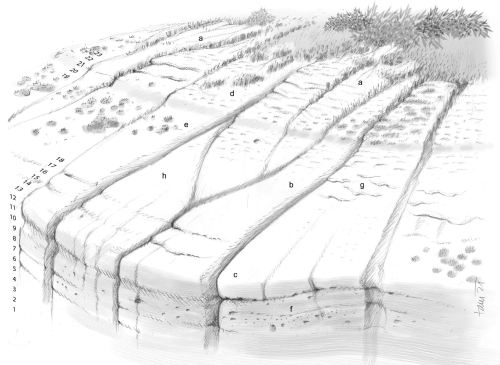Škraplje Provanse (Francija), Gréolières, Caussols in Tourrettes-sur-Loup ter Luberon
DOI:
https://doi.org/10.3986/ac.v53i2-3.13889Ključne besede:
karbonatna kamnina, skalni relief, kompleksometrija, ProvansaPovzetek
Skalni relief kraških oblik, površinskih in jam, ki nastajajo na različnih karbonatnih kamninah in razmerah, je ena najbolj povednih sledi načina njihovega oblikovanja z značilnimi dejavniki in razvoja. Zato smo natančno preučili in spoznali geološke značilnosti in skalne oblike ter njihovo povezanost v skalni relief. Pestrost oblikovanja kraškega površja razkrivajo škraplje na različnih karbonatnih kamninah, drobnozrnatih homogenih in kompaktnih apnencih ter poroznih drobnozrnatih peščenjakih. Na novo razloženo je tudi oblikovanje vzporednih žlebov na nagnjenjih površinah razgaljene skale (Gréolières), razkriva se postopno preoblikovanje skalnega površja iz podtalnega v neposredno izpostavljenega dežju in polzeči vodi po malo nagnjeni skali (Caussols) ter prav tako na novo je predstavljena svojevrstnost oblikovanja karbonatnih peščenjakov zlasti z velikimi žlebovi (Tourrettes-sur-Loup). Hitrost zakrasevanja mlajših karbonatnih kamnin razkrivajo žlebovi na zidovih palače v Avignonu.
Prenosi

Prenosi
Objavljeno
Kako citirati
Številka
Rubrike
Licenca

To delo je licencirano pod Creative Commons Priznanje avtorstva 4.0 mednarodno licenco.
Avtorji jamčijo, da je delo njihova avtorska stvaritev, da v njem niso kršene avtorske pravice tretjih oseb ali kake druge pravice. V primeru zahtevkov tretjih oseb se avtorji zavezujejo, da bodo varovali interese založnika ter da bodo povrnili morebitno škodo.
Podrobneje v rubriki: Prispevki




